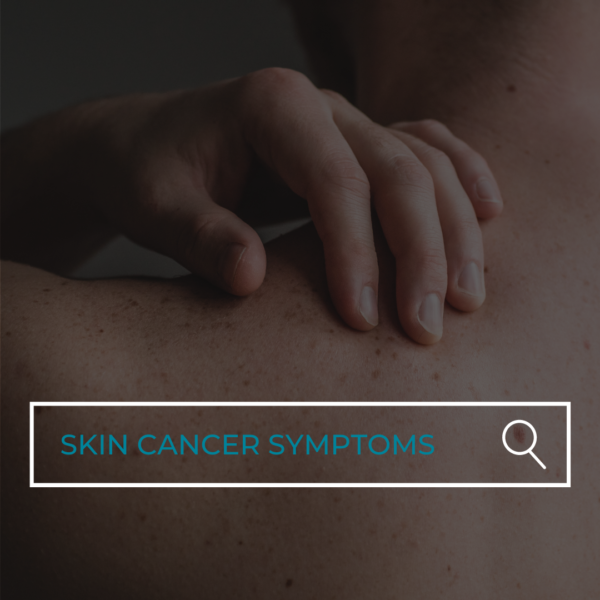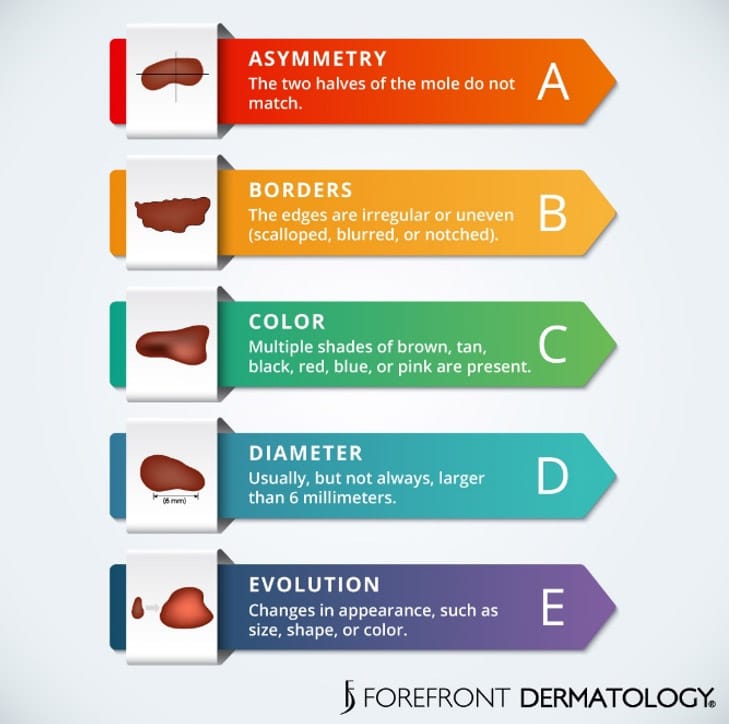
Did you find a mole that looks a little suspicious? Are you questioning if it is skin cancer? For starters, let us just say kudos on paying attention! It is so vital to watch yourself for these things because early detection truly saves lives.
What do the early stages of skin cancer look like?
Skin cancer is the abnormal growth of skin cells. Skin cancer can be found anywhere on your body but is most commonly located on the head, neck, arms, and legs. Don’t just think of the obvious places that YOU can see though, think about the places you might not see very well on your own, like your ear or the back of your knee.
In the early stages of skin cancer, it can look like what would appear as a brand new mole or freckle or it can develop within an existing mole that you have had for years and years. The key to spotting skin cancer early is by paying attention to your skin. When you notice a new spot, does it appear different? Is the color different than your other moles or freckles? If you even have an inkling of a spot not looking quite right, call your local board-certified dermatologist for an appointment as soon as possible. Skin cancer screenings take around 10 minutes and can be lifesaving.
What to look for in a normal vs abnormal spot
As a dermatologist, when we educate our patients on examining their own skin, we commonly refer them to the ABCDE’s.

Asymmetry
Melanoma lesions are often irregular, or not symmetrical, in shape. A non-cancerous mole is typically symmetrical in shape. If you were to draw a line through the middle of a mole, the two halves should roughly match.
Border
Typically a non-cancerous mole will have smooth, even borders. Melanoma lesions usually have irregular borders that are difficult to define.
Color
A non-cancerous mole is commonly a single shade of brown or tan. If there is a presence of more than one color or uneven distribution of color this can be a warning sign of melanoma. Melanoma can occur in a variety of colors including brown, black, red, blue, or purple. These spots can be flat or raised and can bleed easily. Non-melanoma skin cancer, also known as basal and squamous cell carcinoma, typically appears as small, pearly, or pale bumps or as dark red patches that can be raised, flat or scaly in texture.
Diameter
Non-cancerous moles are typically smaller than malignant ones. If its diameter is greater than a pencil eraser, it may be a sign that it is growing or changing. Larger moles that have been stable for an extended period of time are not typically cause for concern; though continued observation is recommended.
Evolution
The evolution of a mole is the most important factor to consider when performing a self-skin check. This is why monthly checks are so important. If you know what is normal, you will easily be able to tell if it has grown, or evolved, over time.
Be Proactive
Remember, early detection saves lives and a simple, yearly in-office skin screening with your local board-certified Forefront Dermatologist can truly mean the difference between life and death. Contact us today to schedule your annual skin screening.





